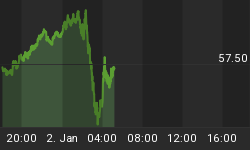Statistical models have helped make the world a better place. For decades, these models have been the quiet heroes that helped engineers ease traffic congestion, doctors slow the spread of diseases, and meteorologists forecast the path of hurricanes.
These successes have inspired mathematicians and scientists to apply statistical models to other complex problems, from thorny human behaviors like drug addiction to certain natural phenomenon -- for example, why it's not possible for 100-foot high waves to regularly swell up from the surface of a perfectly calm ocean.
You may wonder why the heck anyone needs a statistical model to disprove a bizarre notion like this, since tidal waves or tsunamis can come only from earthquakes, landslides, or extraordinarily violent weather. Otherwise, who's ever heard of a ten-story wall of water rising from a "calm" ocean?
Well, a great many mariners have heard of and seen such waves, though not all of them have lived to record the details. "Over the last two decades more than 200 super-carriers - cargo ships over 200m long - have been lost at sea," according to a recently published BBC report. "Eyewitness reports suggest many were sunk by high and violent walls of water that rose up out of calm seas."
The quote is from a story about "rogue waves," and it says the European Space Agency (ESA) has shown them to be real indeed. ESA (Europe's counterpart to America's NASA) studied them as part of the "MaxWave" project, which was begun in December 2000 to either "prove the phenomenon or lay the rumours to rest."
The agency used two Earth-scanning satellites to record 30,000 pictures of the ocean's surface over a three-week period. ESA reports that the data, after a mathematical analysis, "revealed 10 massive waves - some nearly 30m (100 ft) high."
This result was, shall we say, unexpected. Here's why, according to an earlier BBC report:
"Freak waves are the stuff of legend. They aren't just rare, according to traditional views of the sea, they shouldn't exist at all. Oceanographers and meteorologists have long used a mathematical system called the linear model to predict wave height. This assumes that waves vary in a regular way around the average (so-called 'significant') wave height. In a storm sea with a significant wave height of 12m, the model suggests there will hardly ever be a wave higher than 15m. One of 30m could indeed happen - but only once in ten thousand years."
Note well that the key word for the model they used is "linear," which by definition is a straight-line or one-dimensional method of analysis. Non-linear events -- like a 100-foot high wave -- don't fit into the model. Therefore, "they shouldn't exist at all."
Mind you, most statistical models are linear by nature, based on averages and probabilities. They can account for the "outliers" -- namely an effect that lies outside the supposed statistical norm -- but assigns them a probability of appearing only "once in ten thousand years."
But could 10 outliers appear within a three-week period? Sorry, the model says that's not possible. It's "the stuff of legend."
The truth is that for all the good work models have helped accomplish, there are certain stupendously huge patterns that they miss.
This is a column about finance, so perhaps you know where I'm headed next. Above I mentioned using these models to study "thorny human behavior," which is precisely what conventional economists try to do with their number-crunching stock market models. When they're done crunching they use phrases like "Efficient Market Hypothesis," which assumes that markets -- and investors -- are "rational."
Sometimes they even get Nobel Prizes in economics, like the two prominent intellects employed by Long Term Capital Management did in October 1997, less than one year before the fund they helped to manage lost four billion dollars. Oops. They didn't see the 100-foot tall outlier headed their way; after all, its arrival could only come once in ten thousand years.
Long Term Capital Management made headlines at the time of the debacle, yet the episode itself is all but forgotten. Those Nobel laureates were the two brightest lights on a staff that included several other authentic geniuses; it was the strongest concentration of brainpower ever assembled on Wall Street. When it all blew up, the scale of the losses threatened to collapse the U.S. banking system. The New York branch of the Federal Reserve had to get directly involved in engineering the bailout.
But beforehand? A financial calamity that large was unthinkable. Heck, it was as far fetched as supposing that the S&P 500 could lose half its value in a 31-month period, say, from March 2000 to October 2002, or that the Nasdaq would decline by more than 70% in the same period. No way.
Of course, not all the outliers are that immense, though they can be just as unexpected. Think back only a few weeks, to the beginning of June. Unemployment was going down, GDP was going up, earnings were on the rise, blah, blah, etc. -- you know the litany -- it was all coming up roses. Now just go find me even one conventional economist or financial channel talking head who said the S&P 500 would decline during the six consecutive weeks that followed.
But if your method of analysis is NON-linear, you can expect unexpected turns and trends in price. What's more, your search for patterns can begin and end with the market itself -- purported "outside influences" never have and never will change the dominant price trend. A radical approach? Yes, but no more "radical" than the size of the outliers you can train yourself to look for on the horizon.
















